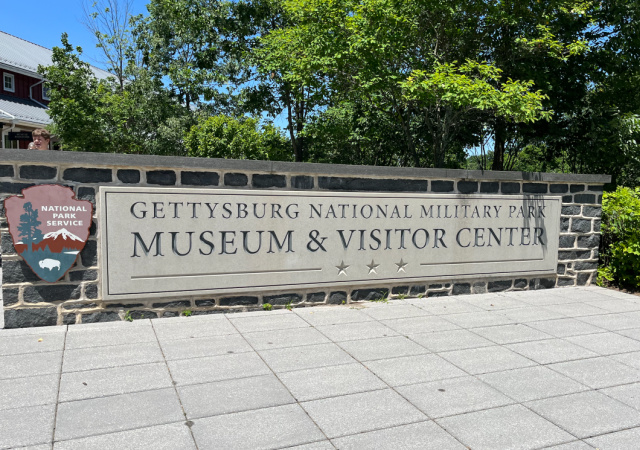
Everyone knows Gettysburg. It didn’t surprise me to see the park crowded on a gorgeous June day. The park is 6,000 acres. The auto-self-guided tour has 16 spots spanning the three-day battle. It took about three to four hours to complete.
What can one say about Gettysburg that isn’t already said? The bloodiest battle in the Civil War. The battle the Confederacy knew it was over for them.
Maj. Gen. George Meade defeated Gen. Robert E. Lee in three days.
165,620 engaged.
51,112 casualties (Thanks for pointing this out! Meant to say this in the first place.)
Gettysburg is the most popular battlefield so the National Park Service has made it the cleanest and most kept battlefield we visited.
Day One: July 1, 1863
McPherson Ridge
The battle started here at about 8 am. Edward McPherson’s farm sits on top of the ridge. He worked as a lawyer and journalist. He was in DC at the time of the fighting serving as Lincoln’s Deputy Commissioner of Internal Revenue. He also served as a Pennsylvania representative in the House.
Confederate General Henry Heth’s division used this ridge to ride toward Gettysburg against the Union cavalry under General John Buford.
John Slentz and his family lived on the farm at the time of the battle. They evacuated the house but returned to fight it in a mess. They used it as a hospital.
Eternal Light Peace Memorial
Confederate soldiers under Maj. Gen. Robert E. Rodes attacked the Union from this hill at 1 pm. They threatened Union soldiers on McPherson and Oak ridges.
FDR dedicated this memorial in 1938 with 1800 Civil War veterans.
Oak Ridge
The last battle of day one. Rodes’s men held the Union at this spot and a few hours later the Union backed off.
The Confederacy had the upper hand at the end of the day. This is an observation tower on the spot. I climbed up it despite my fear of heights.
Day Two: July 2, 1863
North Carolina Memorial
The Confederate army sat at the high ground in this area along Seminary Ridge, through the town, north of the cemetery, and Culp’s hills.
North Carolina has 14,147 men in the Army of Northern Virginia. It provided the second most soldiers in the Confederacy. It also lost 6,000 soldiers, the most men in Gettysburg out of all Confederate states.
Virginia Memorial
Gen. Robert E. Lee sits atop this statue with seven Confederate soldiers at the base. His niece Virginia Carter dedicated the state in 1917.
Lee did not want his beloved Virginia to secede but it happened. Lincoln wanted Lee in charge of the Union army but Lee could not abandon Virginia.
Virginia contributed 19,000 men to the Confederate army, the most of any state.
The controversy over Confederate statues seems to have started with this Virginia statue since it’s the first Confederate statue or monument at Gettysburg:
Thomas Cooper introduced a bill to the Pennsylvania legislature requesting $20,000 dollars for a monument of Robert E. Lee, provided that Virginia match that sum. Union veterans, such as the men of the Henry I. Zinn post of the Grand Army of the Republic opposed the monument, writing that they “could not, would not, and will not give its consent to place a monument at the expense of the State of Pennsylvania, at Gettysburg nor elsewhere in the State of Pennsylvania to his memory, being a rebel and a traitor whose shoulders were crimsoned and stained with the blood of thousands who gave their loyal lives in support of the flag.”[1] Although this bill certainly faced criticism, the Compiler’s article explains some of the background desire for Confederate presence in stone. “A ride along Confederate avenue, with the Union lines with their hundreds of markers in sight, gives a striking expression of the absence of all confederates(SIC) memorials,” the article states.[2] It then asks “Are the men who fought here still unforgiven rebels, who must remain unnamed as a punishment? Have we taken back their country as part of an indissoluble union but have not taken back the men?”[3]
The open field to the east is where Pickett’s Charge happened.
Pitzer Woods/Peach Orchard/Warfield Ridge
I do not have a picture of this stop. I don’t think it was blocked off. Huh. Weird. Actually, I’m combining a few stops here.
Here’s a YouTube video.
I can still tell the story!
Farmer Samuel Pitzer owned these woods at the time of the battle. I couldn’t find much information on him but his house stands at the Eisenhower National Historic Site down the street from Gettysburg.
Maj. Gen. Daniel Sickles (this man is a character so I encourage you to read as much as you can about him) told the 1st United States Sharpshooters to count these woods with the 3rd Maine Infantry.
The two fought with Alabama troops who were there for an attack by Lt. Gen. James Longstreet. The union soldiers retreated once they knew Confederate soldiers lined Seminary Ridge.
Sickles went forward to the Peach Orchard, which was owned by Joseph Sherfy. Sickles thought his high ground would help but his unit needed to cover too much ground and Longstreet attacked before everyone could take their spot.
The Confederates took the Peach Orchard.
The fighting damaged Sherfy’s house and farm buildings.
Little Round Top
Little Round Top sits 650 feet above sea level. What a view.
One rock has a statue of Brig. gen. Gouverneur K. Warren, Meade’s chief engineer, alerted the Union soldiers to the oncoming Confederate soldiers. The extra reinforcements helped the Union hold this spot and stopped the Confederates from taking Cemetery Hill.
It’s often credited with helping the Union win the Battle of Gettysburg.
Gen. Joshua Chamberlain gave the order for the bayonet charge on Little Round Top with his 20th Maine Volunteer Infantry Regiment. The U.S. Sharpshooters in the woods helped push back the 15th Alabama Regiment.
The Wheatfield
You could feel a presence in this field. It was the creepiest place out of every battlefield we visited. Unsettling to say the least. I want to bring ghost hunting equipment to this field.
20,000 men fought here. 4,000 dead. Much like the Viniard Field at Chickamauga, the dead covered the ground.
Farmer John Rose owned the field, which became a land of confusion. Three Union corps went against a bunch of Confederates.
Chaos. They just…fought. And died.
Plum Run/Pennsylvania Memorial
Union soldiers retreated to Plum Run from the Peach Orchard. I don’t know why I don’t have a picture of it. It might have been too crowded for me.
The largest monument in Gettysburg is…Pennsylvania Memorial. Duh. It sits in the spot where Meade brought in the infantry from Culp’s Hill and hold the Union position. It’s the center of the “fish-hook” line. You can see the line in a photo under Little Round Top.
34,530 Pennsylvanians fought at the Battle of Gettysburg: 69 regiments infantry, 9 regiments cavalry, 7 batteries artillery.
Spangler’s Spring
This one happened on July 2 & early July 3.
Spangler’s Stream runs at the bottom of Culp’s Hill. It’s a natural spring where the sides supposedly called a truce so they could fill their canteens. Others say the sides fought here as well.
The Union had one side. The Confederates had the other.
East Cemetery Hill
The fight happened here as darkness fell upon the field. The Union managed to hold off the Confederates.
Day Three: July 3, 1863
High Water Mark or Pickett’s Charge
This area is called the High Water Mark of the Confederacy taking place on Cemetery Ridge. It was the best chance for the Confederacy.
It has three spots: Copse of Trees, The Angle, and the Brian Barn.
12,000 Confederates, including Maj. Gen. George Pickett’s three brigades, against the 7,000 Union soldiers.
Those Confederate soldiers charged toward the Union soldiers over the low stone walls, pictured below.
The Confederates only reached the Union soldiers at The Angle.
National Cemetery
Lincoln gave his Gettysburg Address at the National Cemetery. The Civil War dead lie in the middle of the cemetery. Veterans of other wars surround the Civil War dead.
Conclusion
I hope you guys enjoyed my tour along with the history.
I’m going to travel some more this summer to other battlefields. I will write about them.
Plans next summer include a trip to D.C. Yes, I will drive. Yes, I will see more battlefields. I plan on two days in Shiloh and two days in Gettysburg.
Thank you for reading! I appreciate all of you.
 DONATE
DONATE
Donations tax deductible
to the full extent allowed by law.

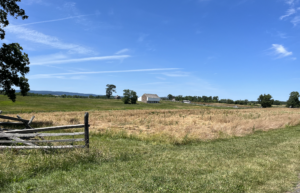

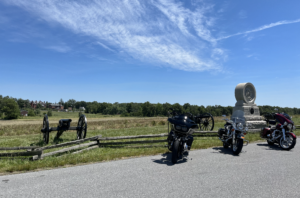
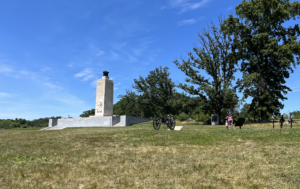
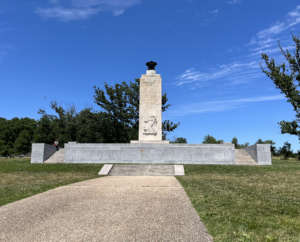
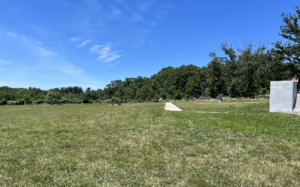
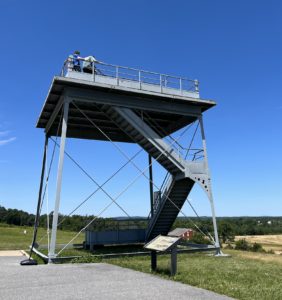
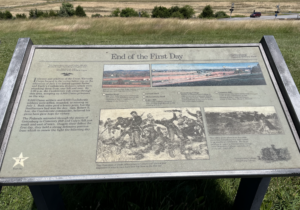
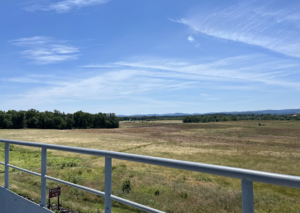


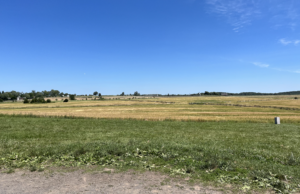



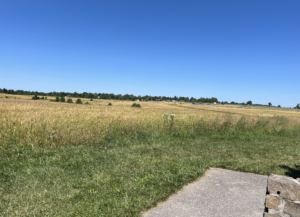

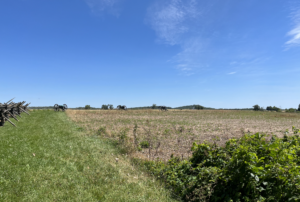

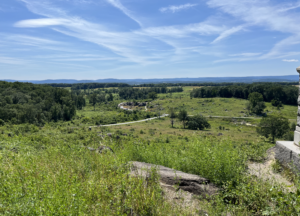
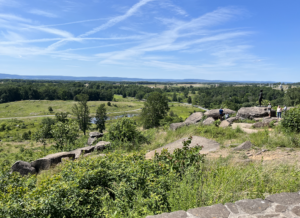
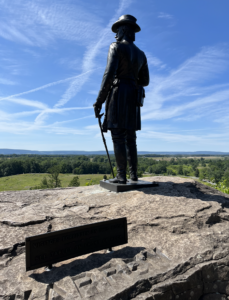
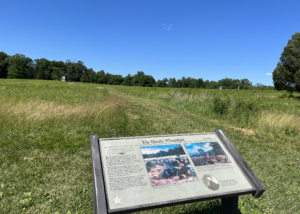




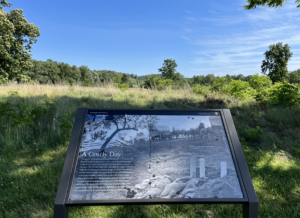
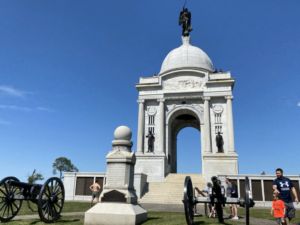
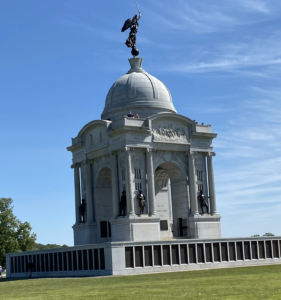
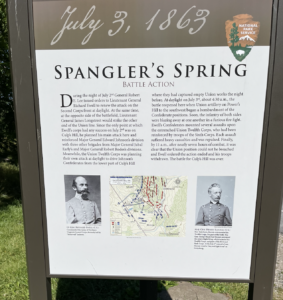
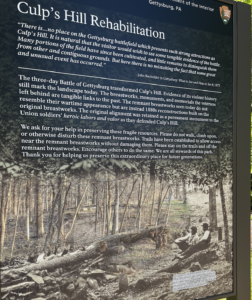


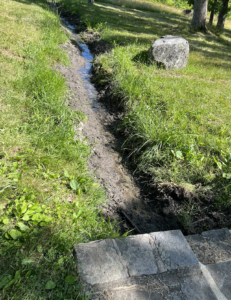
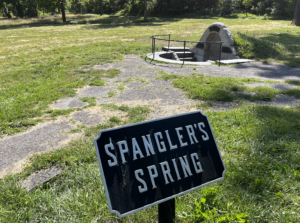

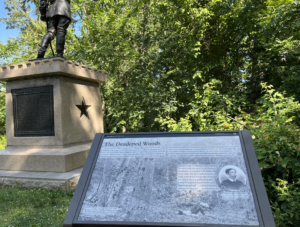
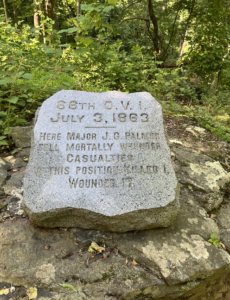
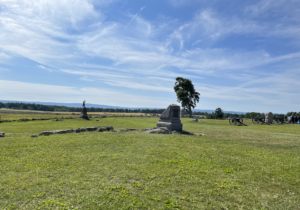

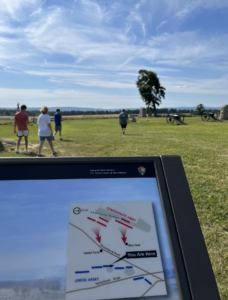


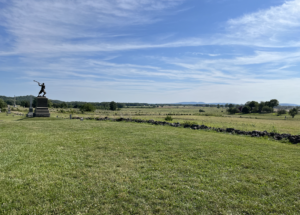
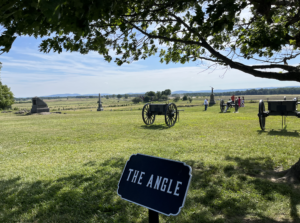
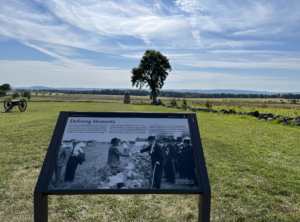
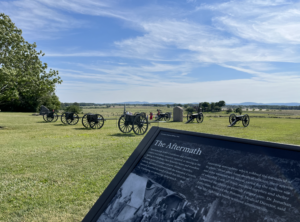
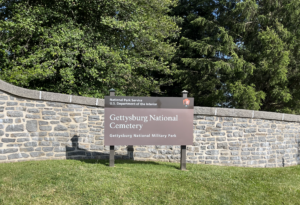
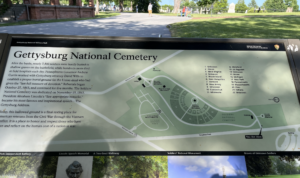
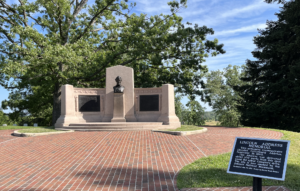
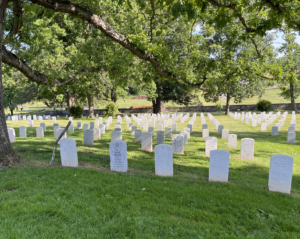
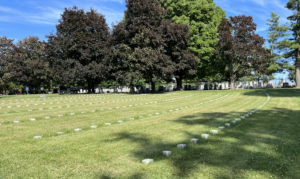
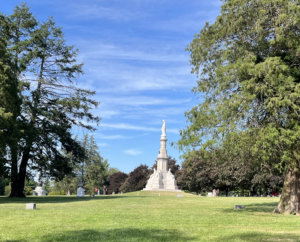









Comments
Last time that I visited Gettysburg Battle Field, we had a private tour guide. Well worth it. One of the “details” that I remember is when the guide pointed out the “shit lines”. The soldiers were positioned in long ranks prior to engagement….because of poor sanitary conditions, many/most soldiers were suffering from Dysentery and other diarrheal illnesses. They had to step back a few yards, drop their pants to relieve themselves and then returned to ranks. Of the approx. 660,000 deaths of soldiers in the American Civil War, 2/3 were caused by infectious diseases.
In high school I asked the tour guide “Why didn’t they just hide behind the monuments?”
<the joke being the 'battlefield tour' was actually a tour of the monuments. We were not allowed to set foot on little round top or try Pickett's charge.'
We have been to Gettysburg twice -once with a Parks Service tour guide who was superb and once by ourselves since I have a deep interest in and have read a lot of books about the Civil War-when you get out of your car and look at the terrain, everything that you have read seems extremely real, and you can imagine what was happening on the first three days of July, 1863.
I lived in Frederick, Maryland for many years. It’s a great place to base out of to bask in Civil War history. So much happened just a short drive from the city. Antietam and Gettysburg were only about a 45 minute drive from Frederick. And Frederick has quite a lot of Civil War history in its own right.
But Gettysburg. There are many parts of the battlefield that are very moving, but for my money the most moving are the woods where the 20th Maine fought off the Confederates. Chamberlain and his men protected the left flank of the Union forces, saving the battle for the North. It just may have been the most significant small unit action in our history. If the Rebs had turned our flank and taken Little Round Top, the war could have been lost.
Walking those woods is almost like being a cathedral for me. The sacrifices made there by both sides still haunts the atmosphere. I’ve been to many Civil War fields, but none measure up to Little Round Top.
You made a mistake that is a particular pet peeve of mine: confusing the number of casualties with the number of dead. Casualties are killed, wounded and missing (generally captured). At Gettysburg, there were over 51,000 casualties which included over 7000 dead, about 3500 on each side, 10,000 captured and the rest wounded. Seven thousand dead is a long way from 51,000 dead.
Oh my thank you! I swear I meant to write casualties.
Living in Harrisburg and married to a Gettysburg native, I’ve been to the battlefield often. Most memorable visit was 10-15 years ago when my state agency was hosting a group from Serbia, who had lived through a civil war and wanted very much to go to see ours at Gettysburg. My late father in law was a retired battlefield guide and I knew he’d enjoy the opportunity, so I volunteered him. Very glad I went along. The stories from our guests brought the fighting through the town on the first day very real.
While living in New Jersey we regularly visited Gettysburg on the days commemorating the Battle. July 1, 2, and 3 to watch the re-enactors with full camping and campaign equipment, horse saddles, tents, canons, gear, etc.. Fascinating, too, were the re-enactors who seem to have assumed the characteristics and personae of real officers on both sides. The “battles” stage on nearby fields were always fascinating, informative and a great spectacle. for all, spectators and participants. .